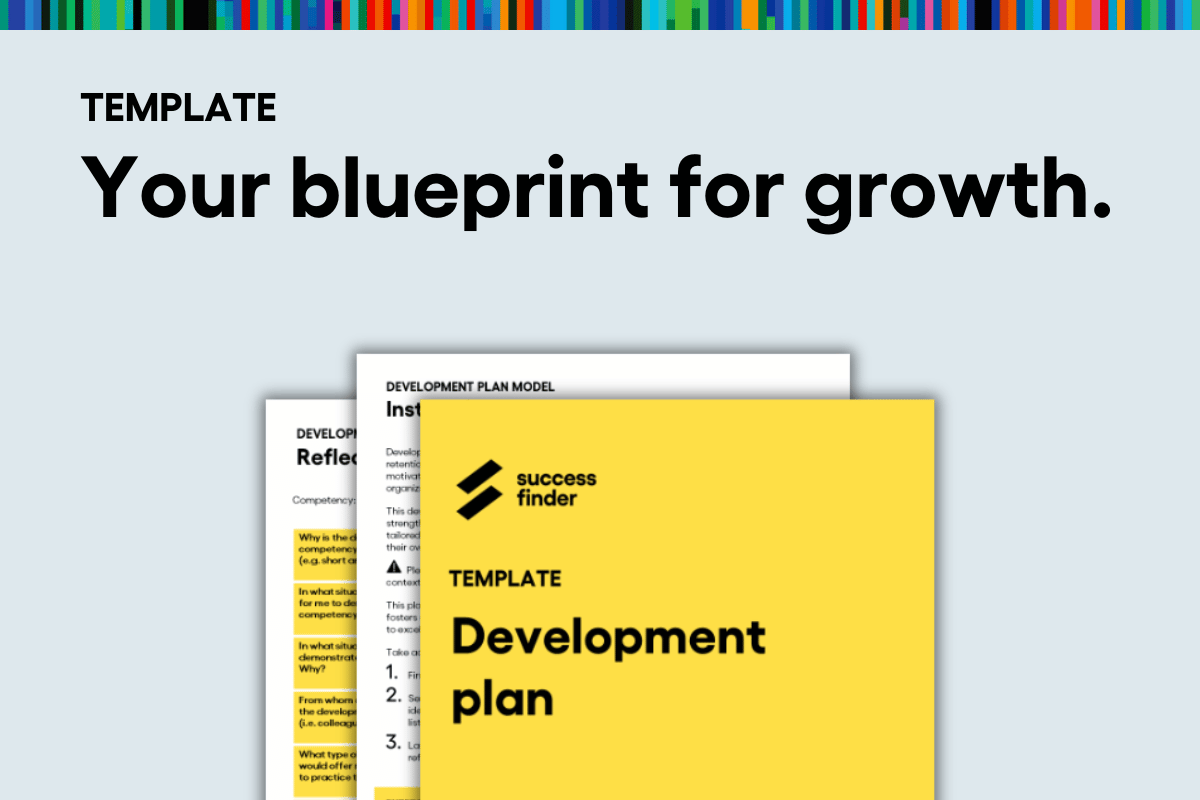Did you know?
According to Forbes, disengaged employees have a 15% lower profitability for a company. Conversely, it was shown that companies that had highly engaged employees had been 21% more profitable.
Whether you operate a small business, or a large enterprise comprised of thousands of employees, your workforce remains pivotal to the success of your organization.
There exist many methods to boost employee engagement, but none have been as successful as a development plan. In the following article, we will cover the essential steps found in every employee development plan and highlight their importance in the process.
What is an employee development plan?
An employee development plan is a structured framework designed to help employees enhance their skills, knowledge, and performance within an organization. It outlines specific goals, learning objectives, and targeted activities tailored to an individual’s professional growth. These plans typically involve a collaborative effort between the employee and their supervisor or manager, focusing on areas for improvement, career aspirations, and the acquisition of new competencies.
Why does it matter?
By providing a clear roadmap for skill-building and career advancement, employee development plans not only benefit the individual’s personal and professional growth but also contribute to the overall success and effectiveness of the organization. Some notable benefits include:
- Helping identify potential leaders and facilitating succession planning
- Promoting skill enhancement and continuous learning
- Increasing employee job satisfaction and motivation
- Fostering a more engaged and committed workforce
- Enhancing overall organizational performance and productivity
These significant benefits should be at the forefront of your employee development plan as you gain support from managers and decision-makers.
Who is best suited for an employee development plan?
Regardless of their position or level, an employee development plan can be beneficial for all employees. Whether you are aiming to nurture the potential of high-potential employees or working with mid-level managers on their leadership training, providing them with strategic self-awareness can be a powerful driver of progress.
It’s worth noting that not all employee development plans are created equal. A one-size-fits-all approach simply won’t work for your entire organization. Every individual possesses distinct strengths and specific areas of development that necessitate personalized attention and tailored strategies.
The steps for creating a successful employee development plan
While there is room for variation when it comes to creating an employee development plan, the 4 steps outlined below will always form the foundation of your plan.
1. Map out the format of your plan
Start by identifying who will be driving the program including, who’s responsible, accountable, consulted, and informed. Depending on the scale and workforce size, you might opt to empower the employees and managers with a tool to drive their own development journey. In this specific scenario, clearly articulate your expectations ahead of time for both employees and managers. For the employees that have been chosen for a more personalized approach, take the time to schedule one-on-one meetings regularly, to ensure everyone remains aligned.
Regardless of your chosen approach, detailing all the essential steps for your program will substantially improve your outcome. Even employing a basic tool like a checklist can help prevent oversights and ensure all the key elements have been considered.
2. Define the skills for development
What are the primary goals you are trying to achieve? How closely related is it to our business goals? Is it feasible given your resources? These are just some of the questions you should be posing whilst determining the individual skills desired from each employee.
Utilizing a behavioral assessment can be a valuable tool for pinpointing the exact skills that require development. It allows for a customized program tailored to the individual’s unique behaviors, acting as a catalyst for insightful discussions. Collaborate with the employee to draft a list of competencies that they will continue to develop, considering both short- and long-term goals.
3. Establish your plan for success
After selecting the candidates and identifying the desired skills, the next step is to define the criteria for success and lay out the necessary steps to achieve it. Note down the specific actions required, anticipate potential obstacles, and determine the necessary resources (whether it be time, personnel or even budget).
Lastly, ensure that you are setting realistic timeframes for each development objective. It is not necessary to have all the objectives completed on the same date.
4. Measure and track your progress
Numerous studies have confirmed that actively monitoring progress significantly enhances goal achievement so take the time to review your efforts and address any issues. Managers should regularly meet with their employees to assess their progress, praise any accomplishments, and receive their feedback.
Additionally, it’s essential to measure the impact of the employee development plan on the organization. Make sure to measure any changes in productivity and employee engagement, and the impact it has on the broader organizational objectives.
Start refining your employee development plan
With this newfound knowledge, it’s time to review your current efforts and identify areas for improvement. If you’re considering a complete overhaul of your current process, begin by downloading our development plan template, which has been tried and tested for maximum results.
Take your employee development plans even further by leveraging SuccessFinder’s award-winning behavioral analytics platform to add in-depth insights into the conversation. Click here to schedule your demo.

Eager to get a head start? Elevate your development programs by downloading our free development plan template.



